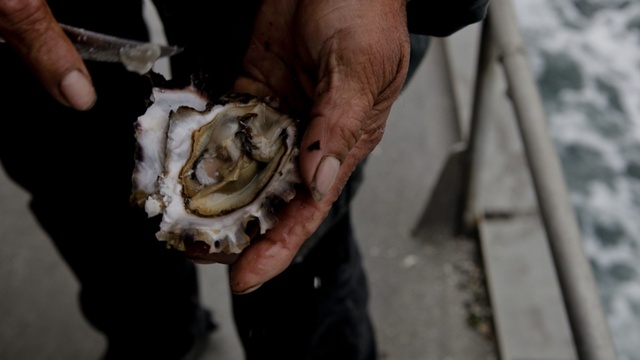 If you like oysters, it is time to pay attention to what is happening in Oregon. And even if you don’t like them, but care about the global food web that allows oysters to grow, reproduce and thrive, what’s happening Oregon should give you pause.
If you like oysters, it is time to pay attention to what is happening in Oregon. And even if you don’t like them, but care about the global food web that allows oysters to grow, reproduce and thrive, what’s happening Oregon should give you pause.
Ocean acidification, a consequence of the oceans being overloaded with carbon dioxide from human fossil fuel use, has been shown by a group of researchers to hamper the development of larval oysters at a hatchery on the Oregon coast. After years of suspicion, this was the smoking gun demonstrating that acidification has real damaging effects on commercial fisheries and that they are happening not 100 years from now but as we speak.
Scientists have been long able to demonstrate in the lab and on paper why this would be so. In the absence of hard evidence from the field, however, they have been exceptionally careful to distinguish what they know from what they suspect. But now it is folly to assume that this problem is limited to one small stretch of Pacific Northwest coastline.
As an indictment of our failure to wean ourselves off oil and coal, this is more fuel for the fire. More importantly, this news will help people understand that there is a hard dollar cost to misusing the oceans. Indeed there is tremendous financial incentive to leaving at least parts of it alone.
My job is lucky enough to come with an office that looks over a lovely marine reserve in the Pacific Ocean whose boundaries recently expanded as part of a revision of California Marine Protected Areas. Of course, this expansion didn’t happen without controversy. There was a predictable hue and cry from sportfishers and commercial fishers who claimed they were being physically separated from their livelihood by a line drawn in the water.
But the facts don’t necessarily support that. Fishermen in Baja California, Mexico decided more than a decade ago to create a marine reserve and make themselves the enforcers of its boundaries. The region they protect is now one of the biologically richest places in Mexico and the subsistence fishermen in Cabo Pulmo no longer have to worry about feeding themselves. California now has a chance to replicate that experience.
Separately a group of researchers writing for the Stockholm Environment Institute put an especially fine point on the argument against exploiting the oceans unsustainably. They calculated a cost savings of more than $1 trillion per year by 2100 if a course of aggressive greenhouse gas emissions reduction is pursued versus our current negligence, often labeled “business-as-usual.” It is a brave attempt to derive a hard dollar figure using extremely nebulous variables. Nonetheless they make a good argument that their estimate is a conservative one.
It is frustratingly naïve to believe that the benefits of offshore oil exploration (or terrestrial, for that matter) automatically justify the costs. The same can be said for corporate farming that routes tons of fertilizer and pesticides to the oceans. And the same is true for largely uncontrolled disposal of pharmaceutical products and plastics. It is naïve because even the most educated experts do not yet even know the full costs. The oyster industry in Oregon affected by ocean acidification is worth about $278 million, a pittance in a world where a single oilrig can cost $5 billion. On the other hand, that industry is everything to the people who rely on that fishery and a source of great pleasure to the consumers it serves. As if that is not enough to make us think, here is a final thought: The acidification brought on by the past 150 years or so of fossil fuel use will require more than 1,000 years to reverse.
The ocean is large and opaque. It is an act of irresponsible faith to think that impenetrable blue mass is big enough to absorb all our sins without consequence. We need to finish the work of realistically assessing the ocean’s value, and cherish it accordingly.
Tony Haymet, PhD, is director of Scripps Institution of Oceanography in La Jolla, California, and formerly Chief of Marine & Atmospheric Research at CSIRO Australia.
© Copyright (c) The Vancouver Sun



